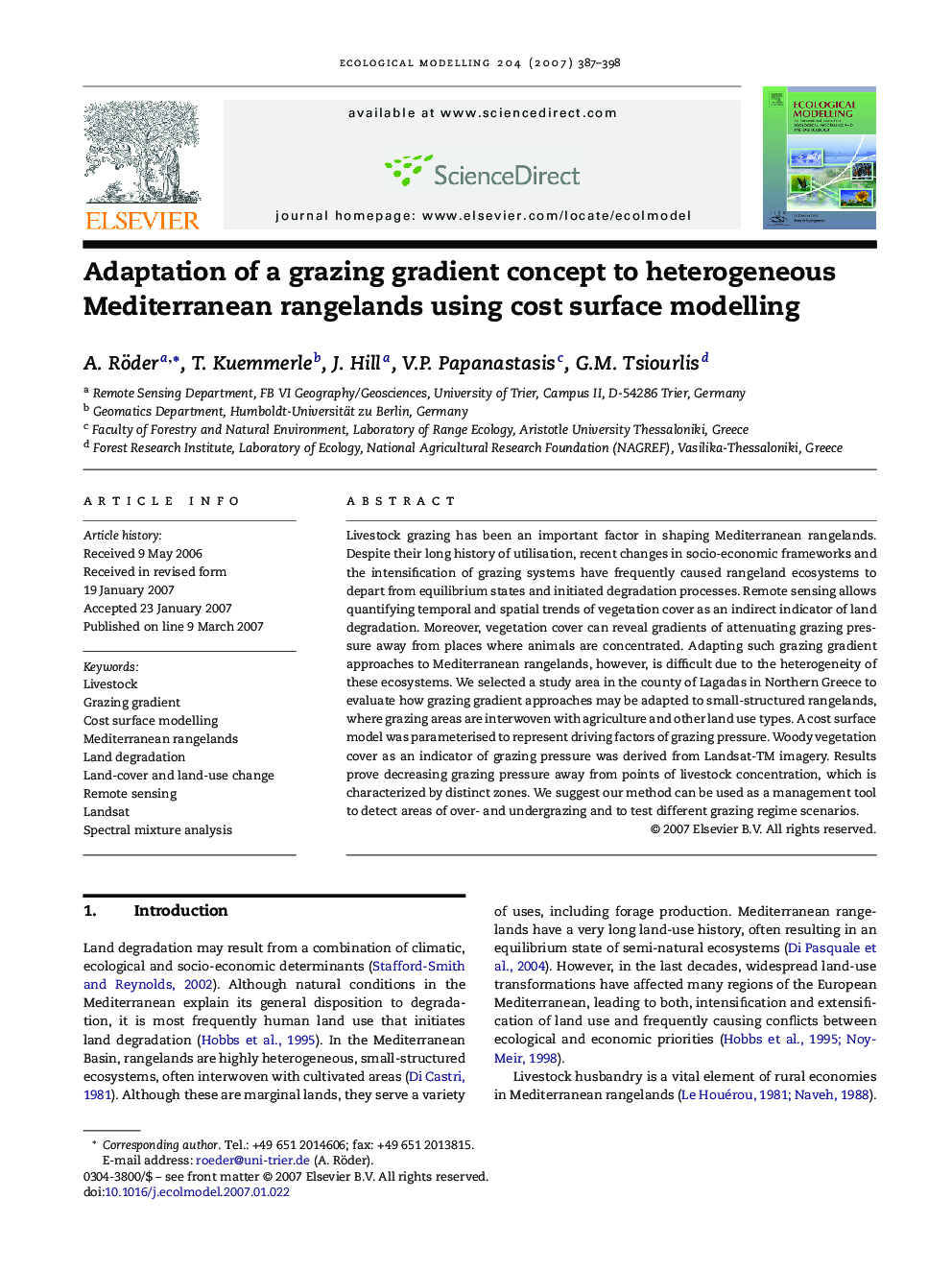| Article ID | Journal | Published Year | Pages | File Type |
|---|---|---|---|---|
| 4378366 | Ecological Modelling | 2007 | 12 Pages |
Livestock grazing has been an important factor in shaping Mediterranean rangelands. Despite their long history of utilisation, recent changes in socio-economic frameworks and the intensification of grazing systems have frequently caused rangeland ecosystems to depart from equilibrium states and initiated degradation processes. Remote sensing allows quantifying temporal and spatial trends of vegetation cover as an indirect indicator of land degradation. Moreover, vegetation cover can reveal gradients of attenuating grazing pressure away from places where animals are concentrated. Adapting such grazing gradient approaches to Mediterranean rangelands, however, is difficult due to the heterogeneity of these ecosystems. We selected a study area in the county of Lagadas in Northern Greece to evaluate how grazing gradient approaches may be adapted to small-structured rangelands, where grazing areas are interwoven with agriculture and other land use types. A cost surface model was parameterised to represent driving factors of grazing pressure. Woody vegetation cover as an indicator of grazing pressure was derived from Landsat-TM imagery. Results prove decreasing grazing pressure away from points of livestock concentration, which is characterized by distinct zones. We suggest our method can be used as a management tool to detect areas of over- and undergrazing and to test different grazing regime scenarios.
